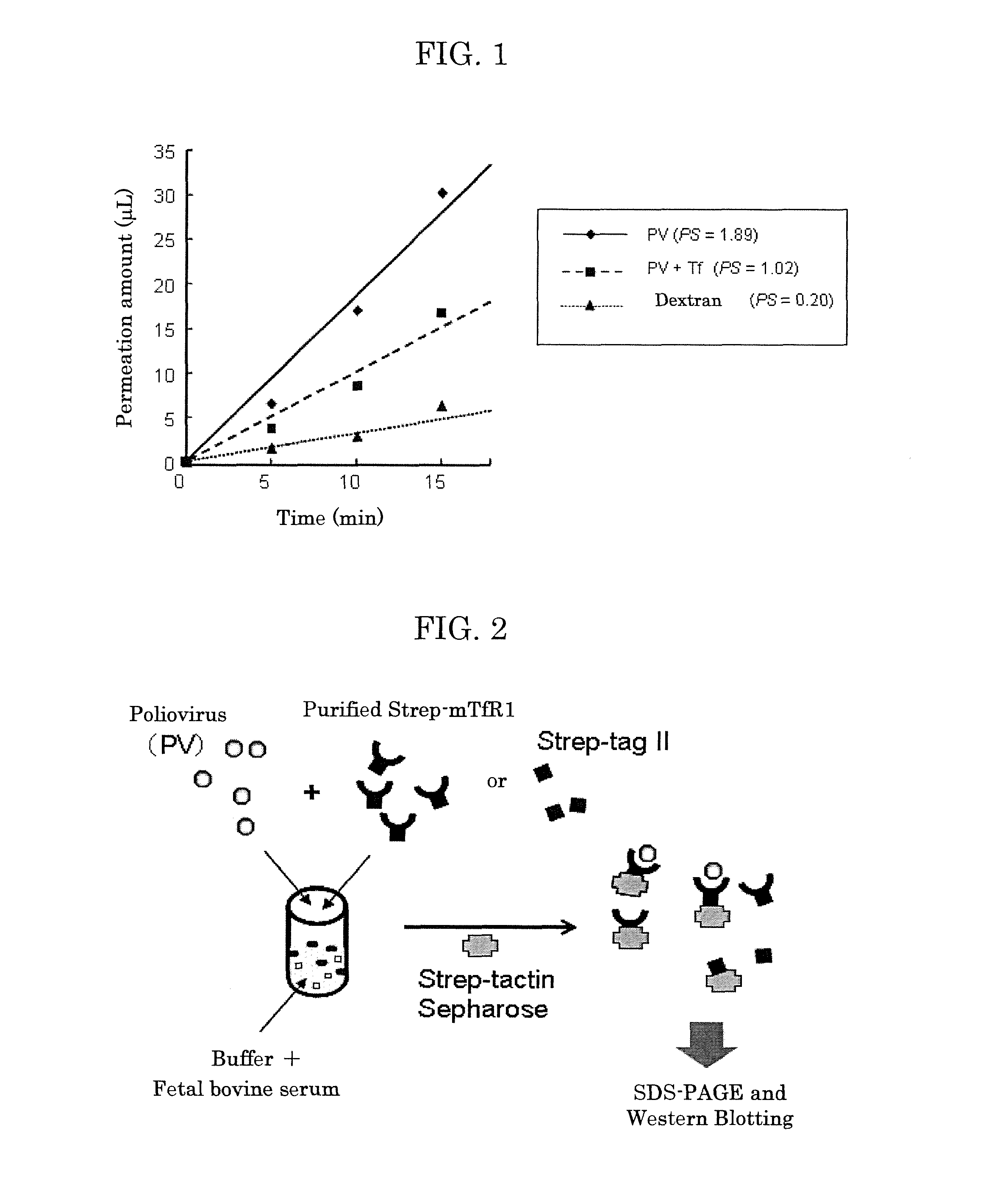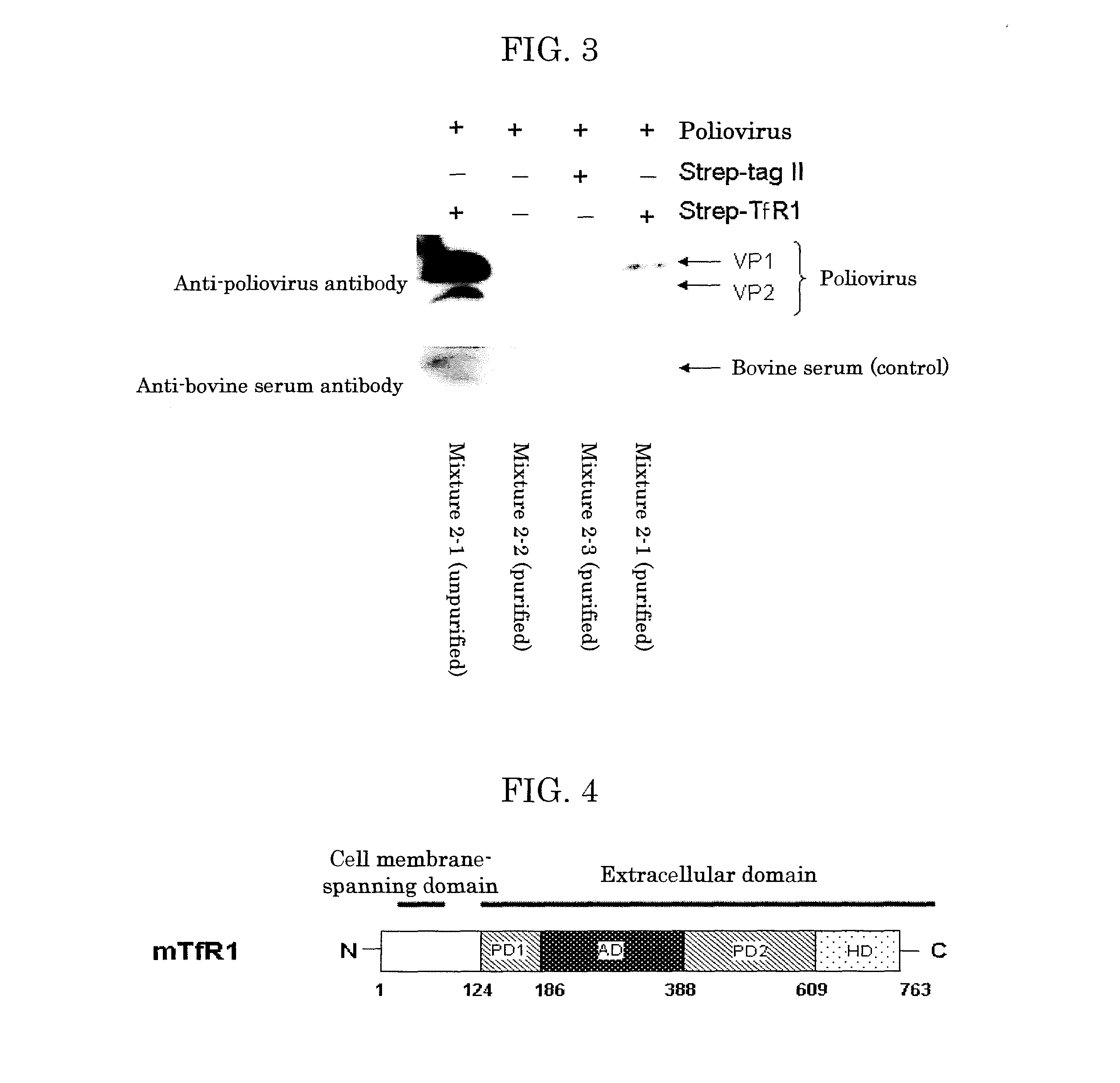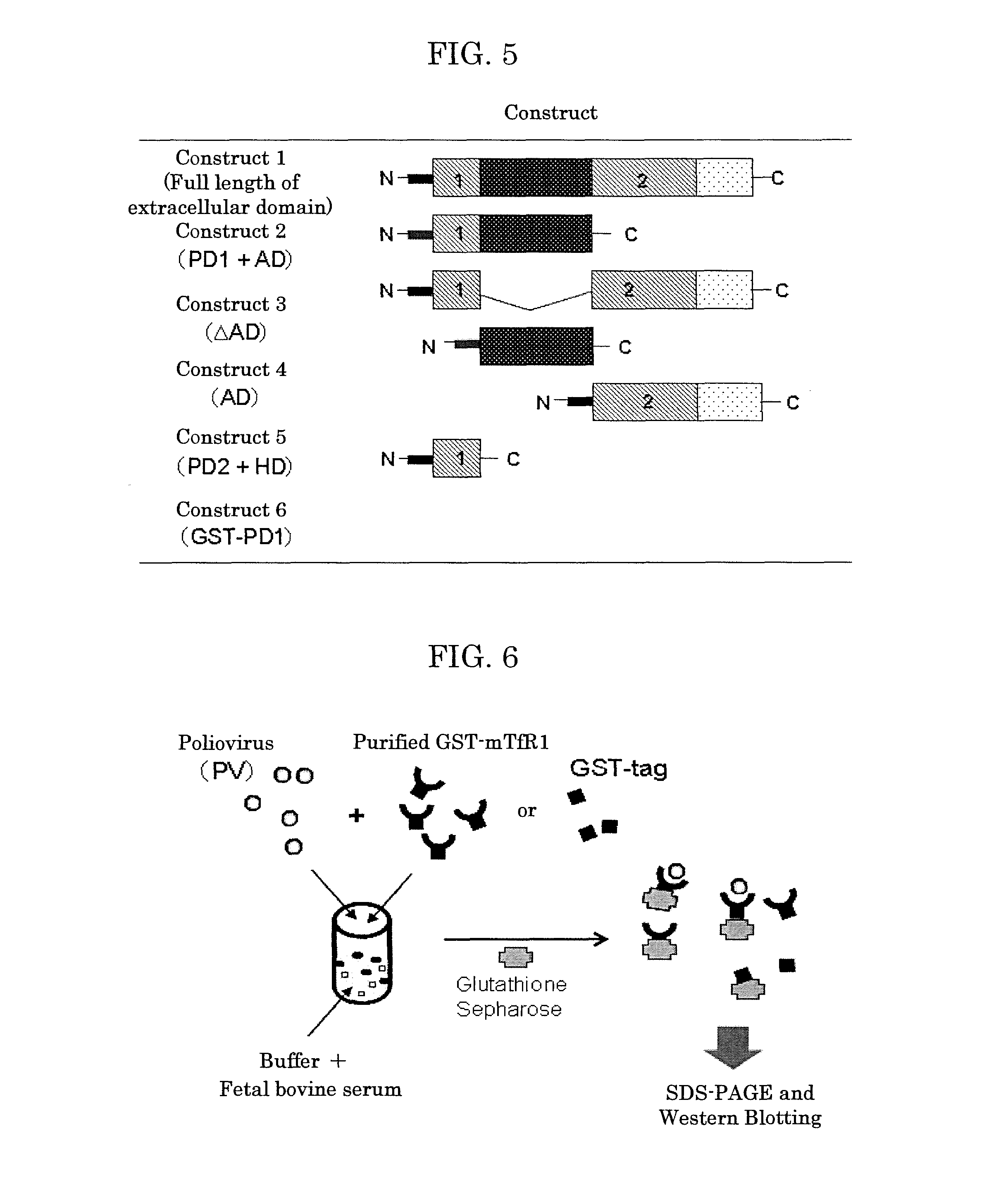Drug Transporter Permeating Blood-Brain Barrier, Peptide and Use Thereof
- Summary
- Abstract
- Description
- Claims
- Application Information
AI Technical Summary
Benefits of technology
Problems solved by technology
Method used
Image
Examples
Example
Test Example 1
Effects of Transferrin on Permeation of Poliovirus Through the Blood-Brain Barrier
—Preparation of Brain Capillary Endothelial Cells—
[0163]Mouse brain capillary endotherial cells (MBEC) 4 were cultured in D-MEM (product of Sigma Co., Ltd.) containing 10% by mass inactivated fetal bovine serum (FBS) (product of COSMO BIO Co., Ltd.).
[0164]These brain capillary endothelial cells were dispersed by treating them with tripsin-EDTA (ethylene diaminetetraacetate).
[0165]Note that, the MBEC had been prepared according to the description of Shirai A et al., BBA; 1994 Jul. 21; 1222(3): 400-404.
—Preparation of Poliovirus—
[0166]Purified poliovirus (PV) was prepared according to the description of Yang W X. et al., 1997, Virology, Vol. 229, p. 421-p. 428 previously reported by the present inventors.
[0167]Floating HeLa cells infected with poliovirus (Mahoney strain) were homogenized with a Dounce-type homogenizer in a buffer (10 mM Tris-HCL (pH 7.4), 100 mM sodium chloride, 1.5 mM magn...
Example
Test Example 2
Confirmation of Binding Between Poliovirus and Transferrin Receptor
[0175]Next, whether the poliovirus directly bound to a transferrin receptor was confirmed by western blotting in the following manner. FIG. 2 is a schematic, explanatory representation of Test Example 2.
—Preparation of a Transferrin Receptor—
[0176]—Cloning of Mouse Transferrin Receptor 1 (mTfR1)—
[0177]Total RNA, which had been prepared from the liver of a mouse, was used to prepare cDNA with PtimeScript 1st Strand cDNA synthesis Kit (product of TAKARA BIO INC.). The prepared cDNA was used as a template for cloning of mTfR1 soluble domain (R123 to F763). Based on the sequence of GeneBank registration number BC054522.1, the following primers were designed and used: a sense primer with a primer sequence expressed by the following SEQ ID NO: 17 containing a SacII cutting site (underlined sequence); and an antisense primer with a primer sequence expressed by the following SEQ ID NO: 18 containing a XhoI cutt...
Example
Test Example 3
Identification of Binding Domain of the Transferrin Receptor to Poliovirus
[0189]Next, the following method was employed to confirm a domain of the transferrin receptor to which poliovirus binds.
[0190]As illustrated in FIG. 4, the mouse transferrin receptor 1 (mTfR1) is known to contain: a first protease-like domain (PD1) of the 124th residue to the 185th residue from the N terminus side; an apical domain (AD) of the 186th residue to 387th residue; a second protease-like domain (PD2) of the 388th residue to the 608th residue; and a helical domain (HD) of the 609th residue to the 763th residue. These domains are extracellular domains.
[0191]Using the pASK-mTfR1 prepared in Test Example 2 as a template for PCR, the following 6 kinds of constructs were produced by a routine method: construct 1 of the full length of the extracellular domain; construct 2 of PD1 and AD; construct 3 of the full length of the extracellular domain with AD removed (ΔAD); construct 4 of AD only; co...
PUM
| Property | Measurement | Unit |
|---|---|---|
| Fraction | aaaaa | aaaaa |
| Width | aaaaa | aaaaa |
Abstract
Description
Claims
Application Information
 Login to View More
Login to View More - R&D
- Intellectual Property
- Life Sciences
- Materials
- Tech Scout
- Unparalleled Data Quality
- Higher Quality Content
- 60% Fewer Hallucinations
Browse by: Latest US Patents, China's latest patents, Technical Efficacy Thesaurus, Application Domain, Technology Topic, Popular Technical Reports.
© 2025 PatSnap. All rights reserved.Legal|Privacy policy|Modern Slavery Act Transparency Statement|Sitemap|About US| Contact US: help@patsnap.com



